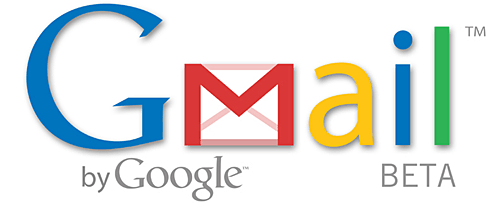Jefferson Graham
USA Today

4-way battle among e-mail rivals heats up as Gmail makes gains

Gmail is the fastest-growing online e-mail offering in an increasingly competitive market
You’ve got Gmail.
If you use online e-mail programs, chances are you’ve added Google’s free Gmail to the mix. Since leaving “by invitation only” status in early 2007, Gmail has seen its usage rise 47%. It’s the fastest-growing online e-mail offering.
That’s intensified a four-way battle in the lucrative market between Google, Yahoo, Microsoft and AOL. They’re all offering a barrage of new e-mail features to get you to switch — or stay. Need to send big video files with your e-mail, as large as 5 gigabytes? That’s now possible. Want to read your webmail in an Outlook-like e-mail program, and on your phone? Easy.
“There is a much stronger sense of competition now,” says Tom Austin at researcher Gartner. “The big four are anxiously trying to build share not just to provide e-mail, but to keep you in their network.”
Advertisers spend more marketing to e-mail customers than anywhere else on the Web after search advertising, according to market tracker Nielsen Online. In March, advertisers spent $302 million, 34.8% of non-search online spending, up from 30.9% the previous March, Nielsen says.
Microsoft and Yahoo dominate webmail. They’re virtually tied for the top spot. In February, the most recent statistics available, they had 256.2 million and 254.6 million users, respectively, according to researcher ComScore Media Metrix.
Google is No. 3, with 91.6 million users. No. 4 AOL, the company that first popularized Internet mail in the 1990s, has 48.9 million.
Here’s what’s new at four e-mail providers:
Google:
Chat and sync outside of Gmail
Gmail fans can now send instant messages directly from Gmail to both Google’s GTalk and AOL’s AIM, and sync Google Calendar with Microsoft’s Outlook program.
Colored labels are available to tag different types of e-mail (friends, soccer team, etc.). Keyboard shortcuts let you click “c” to compose a new e-mail or “r” to reply.
Gmail began in 2004 as a private beta, or test, available only to those who were lucky enough to be “invited” in by friends who already used it.
Gmail is still in beta, but that’s more of a private joke at Google; it’s expected to leave beta sometime this year.
Gmail’s dramatic growth in a year (at a time when Microsoft and Yahoo saw increases of 10% and 5%, respectively) stems from the overall rise of Google, analyst Austin says.
“People spend so much time with Google that adding Gmail was natural. You could argue that Yahoo Mail has a better interface and is easier to use, but Google is the brand right now,” Austin says.
AOL:
Send more photos
One big consumer gripe about e-mail — the frustration inherent in trying to send large files — has been solved. Ever try to send a group of photos or a video clip only to have your inbox slow to a crawl? More likely, your e-mail provider wouldn’t let you send it at all because of strict size limits on attachments.
Now, AOL will let you send up to 5 gigabytes of data via your e-mail, but not as a traditional attachment. Instead, it’s via a link to its Xdrive online backup service.
Warning: This could take anywhere from a few minutes to two days, if you truly put up 5 GB of data.
Meanwhile, want a new e-mail address but find that your name is already taken? AOL is offering a new form of vanity e-mails in the AOL network. You can choose among 30 domains, such as [email protected], and [email protected].
“You don’t have to be some number at AOL.com; you can be who you want to be,” says AOL Mail Vice President Richard Landsman. “We’ll be doing a lot more of this. We feel it’s very important to give people choice.”
Yahoo:
Faster contact search
Looking for all the e-mails from one contact? Yahoo Mail has a shortcut that’s much faster than typing a name into a search box. Double-click the contact’s name in the e-mail, and previous e-mails from that person show up. In development: a feature that will help users target the e-mail from their most important recipients. “We know the people you e-mail the most,” says John Kremer, Yahoo’s vice president of mail. “We could surface them to the top of the inbox.”
Microsoft:
New look and new name
The old Hotmail is now called Windows Live Hotmail and has been redesigned to resemble the desktop Outlook Express program (now renamed Windows Mail). Contacts and calendar are part of the inbox. Live mail is part of the new Live network, home to not just Hotmail, but also Live Messenger and Spaces, a place to share photos via the SkyDrive virtual hard drive. Like AOL’s Xdrive, SkyDrive also offers 5 GB of shareable online backup. However, Microsoft has strict file-size limits — 50 MB per file — that will knock out anything beyond a handful of photos.

